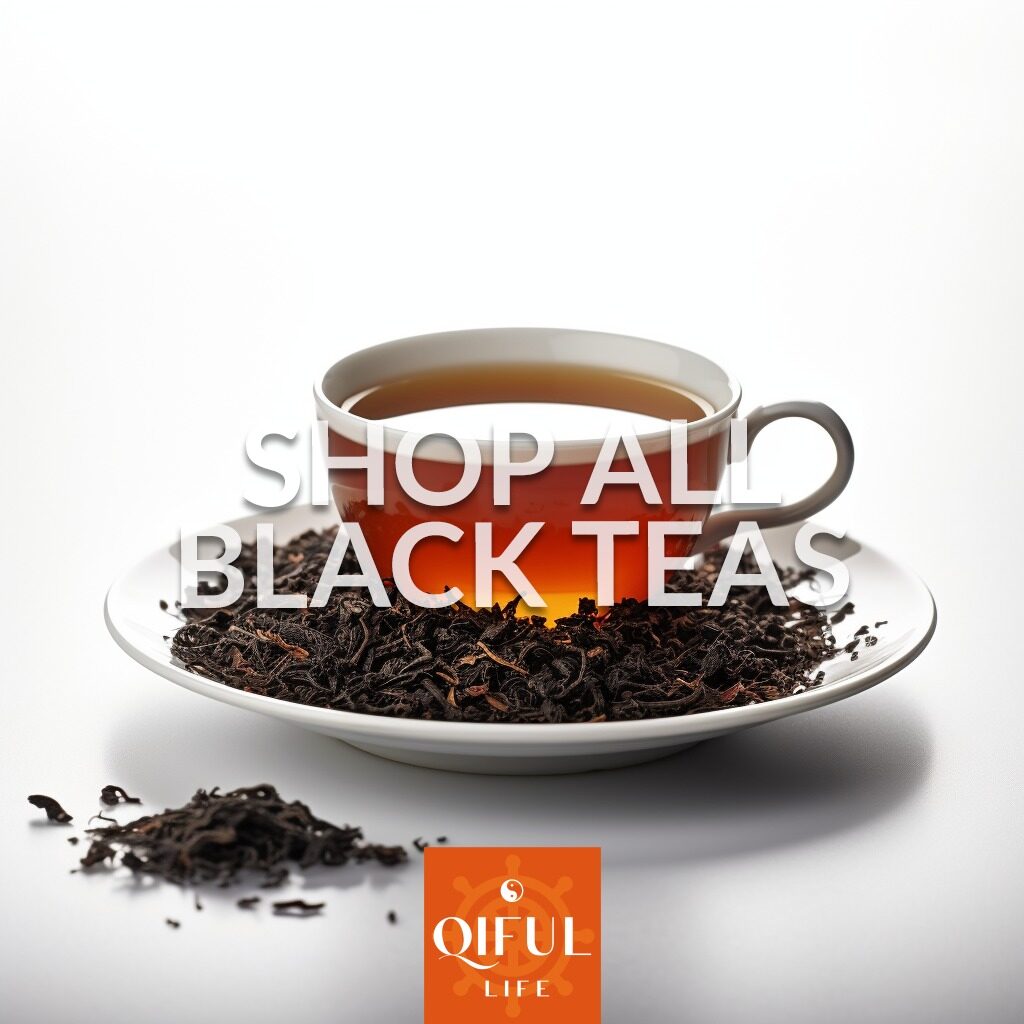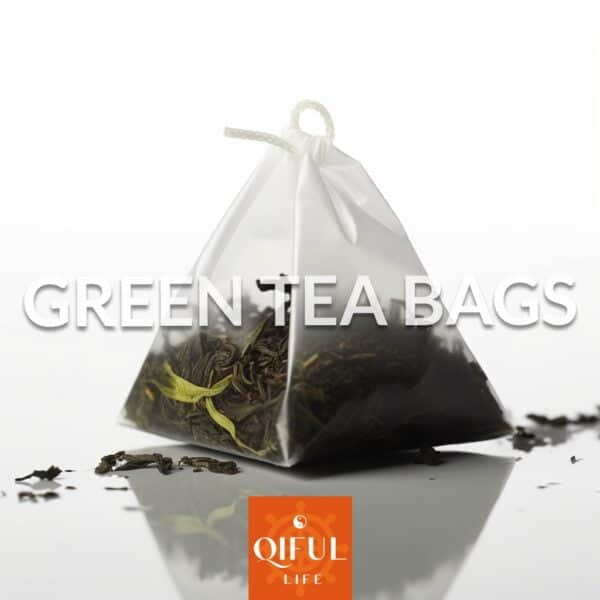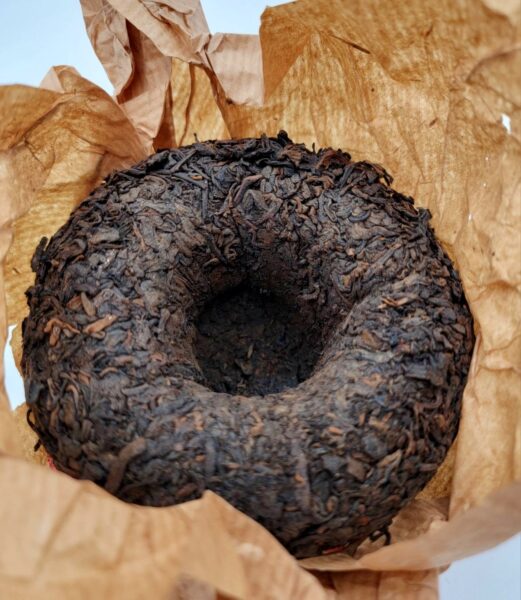Black tea is a fully oxidized tea. It comes from processed leaves of the Camellia sinensis plant and delivers a red-colored liquid containing caffeine. Drinkers can consume it hot or cold depending on leaf type. It ranks as the second most consumed drink in the world after water, and producers generate nearly 4–5 million tons worldwide.
Summary of Black Tea
| Data Type | Highlights |
| Total global consumption | Approximately 4-5 million tons produced yearly. |
| Daily consumption | ~3 billion cups daily; black tea is the most common type globally |
| Top consumers | Turkey (~3.2 kg/capita), UK, Ireland, Sri Lanka, Argentina |
| Major producers | China, India, Sri Lanka, Kenya dominates output/export |
All true black tea comes from Camellia sinensis. While specific varietals influence the flavor and caffeine content, the processing method creates the main differences.
Producers use either Camellia sinensis assamica (large-leaf varietal from India) or Camellia sinensis sinensis (small-leaf, cold-weather varietal common in China) to make black tea. They wither the leaves to reduce moisture, roll them to damage the cell walls and extract juices and nutrients, and then ferment them through a series of chemical reactions.
These processes change the leaves’ color and flavor, and the chosen methods determine the final product’s quality.
Types of Black Tea
There are several different primary types of black tea:
- Loose-leaf black tea: Loose leaves require a strainer or infuser.
- Black tea bags: Pre-portioned for convenience.
- Single region/blend: Indicates either a pure origin or a blend (common in mass-market tea bags).
- Aged black tea: Matures over time for deeper flavor.
- Flavored black tea: Combines black tea with added spices or dried fruit.
- Black tea cakes: Pressed into solid cakes and traditionally used for shipping.
- Black Tea Balls: Typically from Yunnan, these are sun dried medium to large size leaves compacted into balls for individual consumption.
Most common is smaller, loose leaf varieties used in tea bags, blends, or packaged containers.
The Origins of Black Tea
Tea drinking likely began thousands of years ago, but black tea emerged more recently.
The origin story of tea stretches so far back that myth and reality blur. According to legend, Emperor Shennong discovered tea when a leaf blew into boiling water. Black tea, however, appeared around the 1600s when green and oolong teas dominated. One story says an army occupied a tea factory and delayed production. That delay caused over-drying and oxidization, and those conditions led to the unintentional creation of black tea.
We can’t confirm these legends, but black tea had already spread by the 17th century. Its bold flavor and long shelf life attracted European traders. Political events in the USA during the 17th–18th centuries centered on black tea.
Historical Significance and Cultural Heritage
People often approach tea brewing with methodical, tradition-steeped care. In China, younger generations brew tea to show elders respect. In the past, lower classes brewed and served tea for upper classes the same way.
In the West, tea carries its own reverence. For the British, a “cuppa” fixes any rough day. In the American South, people add sugar and ice to black tea and create a sweet tea perfect for hearty meals or porch afternoons.
The Global Spread of Black Tea
Once the British developed a taste for black tea, they found and cultivated Camellia sinensis assamica in India. Initially expensive, it became a luxury item, and “afternoon tea” traditions arose—complete with finger sandwiches and fine china.
By the mid-1800s, tea producers expanded production across British colonies. This accessibility turned it into a staple in both Britain and India (where locals brew it with milk, sugar, and spices).
Black Tea Production Areas
The global tea market exceeds $120 billion, and several countries grow and produce the crop:
Black Tea Production Table
| Region | Black Tea-Producing Areas |
| East Asia | China, Taiwan, Japan |
| South Asia | India, Sri Lanka, Nepal, Bangladesh |
| Southeast Asia | Vietnam, Thailand, Indonesia, Myanmar, Malaysia |
| Central Asia | Iran, Turkey, Georgia, Azerbaijan, Kazakhstan |
| Middle East | Iran, Iraq, Syria, Yemen |
| Africa | Kenya, Malawi, Uganda, Tanzania, Rwanda, Zimbabwe, South Africa, Burundi, Cameroon, Ethiopia |
| Europe | United Kingdom (small production), Russia, Portugal, Italy, Germany |
| North America | United States (notably South Carolina, Hawaii), Canada (very small scale) |
| South America | Argentina, Brazil, Peru |
| Oceania | Australia, Papua New Guinea, New Zealand (very limited) |
Below we break down the top 4 major regions by black tea production and include their most popular variants and names.
China Black Tea Production
China, the birthplace of tea, produces the most tea worldwide—more than double that of any other country. Key regions include:
- Huanan: Includes Fujian, famous for its smoked black tea, Lapsang Souchong.
- Jiangnan: The largest producing region, known for Keemun tea, created in the 19th century.
- Xinan: Southwestern region that includes Yunnan, considered the birthplace of tea.
Here is a complete table of Chinese Black Tea production areas and types:
| Region / Province | Black Tea Type (English) | Chinese Name | Notable Characteristics |
| Anhui | Keemun Black Tea | 祁门红茶 (Qímén Hóngchá) | Floral, winey aroma; bright red liquor; delicate and refined |
| Fujian | Lapsang Souchong | 正山小种 (Zhèngshān Xiǎozhǒng) | Pine-smoked or unsmoked (modern); rich, bold, pine resin or dried fruit flavor |
| Fujian | Tanyang Gongfu | 坦洋工夫 (Tǎnyáng Gōngfū) | Bold, malty, slight fruitiness; Gongfu processing |
| Fujian | Zhenghe Gongfu | 政和工夫 (Zhènghé Gōngfū) | Soft, sweet, mellow; light honey and fruit notes |
| Fujian | Min Hong | 闽红 (Mǐn Hóng) | General term for Fujian black teas |
| Yunnan | Dianhong | 滇红 (Diān Hóng) | Rich, malty, earthy; golden buds; strong, smooth body |
| Guangdong | Yingde Black Tea | 英德红茶 (Yīngdé Hóngchá) | Full-bodied, cocoa and floral notes; commonly used in milk tea |
| Sichuan | Sichuan Black Tea | 川红 (Chuān Hóng) | Sweet, mellow, and smooth; sometimes smoky |
| Hunan | Baoying Gongfu | 宝庆功夫 (Bǎoqìng Gōngfū) | Subtly sweet and mellow; regional specialty |
| Zhejiang | Wuyi Black Tea (Zhejiang) | 武义红茶 (Wǔyì Hóngchá) | Mellow, slightly sweet; not to be confused with Wuyishan oolongs |
| Jiangxi | Wuyuan Black Tea | 婺源红茶 (Wùyuán Hóngchá) | Delicate, sweet, lightly fruity; from a green-tea-dominant area |
| Guizhou | Guizhou Black Tea | 贵州红茶 (Guìzhōu Hóngchá) | Organic-focused; rich and mellow; increasingly exported |
| Henan | Xinyang Black Tea | 信阳红茶 (Xìnyáng Hóngchá) | Rare; smooth and soft; green tea is more common in this region |
| Hubei | Enshi Black Tea | 恩施红茶 (Ēnshī Hóngchá) | Clean, mellow, floral; grown in a high-altitude region |
| Shaanxi | Shaanxi Black Tea | 陕西红茶 (Shǎnxī Hóngchá) | Woody, robust, with mountain herb notes |
| Chongqing | Wanzhou Black Tea | 万州红茶 (Wànzhōu Hóngchá) | Bold, strong, malty; relatively unknown outside the region |
Taiwan Black Tea
Though better known for oolong, Taiwan also makes exceptional black tea like Black Jade Taiwan Tea, developed in the 1990s.
| Region | Black Tea Type (English) | Chinese Name | Notable Characteristics |
| Sun Moon Lake(Nantou County) | Sun Moon Lake Black Tea (Red Jade No. 18) | 日月潭紅茶 / 紅玉(Rìyuètán Hóngchá / Hóngyù) | Rich, smooth, with notes of cinnamon, mint, clove; hybrid of Assam and wild tea |
| Sun Moon Lake | Red Rhythm No. 21 | 紅韻21號 (Hóngyùn 21 Hào) | Mellow, smooth, floral-fruity; bred for elegance and balance |
| Yuchi Township | Assam Black Tea (Taiwan-grown) | 阿薩姆紅茶 (Āsàmǔ Hóngchá) | Bold, malty, full-bodied; Indian Assam cultivar adapted to Taiwan’s terroir |
| Lishan / Alishan | High Mountain Black Tea | 高山紅茶 (Gāoshān Hóngchá) | Grown at high elevations (1,200–2,000m); light, fruity, honeyed, floral |
| Taitung / Hualien | Red Oolong (heavily oxidized) | 紅烏龍 (Hóng Wūlóng) | Semi-ball rolled, 85–90% oxidized; rich, smooth, honey-sweet, with long-lasting finish |
Japan
Japan primarily produces green tea, but also makes black tea, known as Wakoucha. From the early to mid-20th century, Japan produced large quantities of black tea. But competition from India and Sri Lanka, among other factors, shifted local preferences toward green tea.
| Region | Black Tea Type (English) | Japanese Name | Notable Characteristics |
| Kagoshima(Kyushu) | Kagoshima Wakocha | 鹿児島和紅茶 | Mild, smooth, slightly sweet; often made from Yabukita or Benifuki cultivars |
| Shizuoka(Chubu) | Shizuoka Wakocha | 静岡和紅茶 | Floral, delicate, clean finish; produced in small batches by green tea farmers |
| Miyazaki(Kyushu) | Miyazaki Wakocha | 宮崎和紅茶 | Light-bodied, honeyed, sometimes fruity or spicy; known for pesticide-free small farming |
| Nara / Kyoto | Yamato Wakocha | 大和和紅茶 | Soft, smooth, earthy-sweet; made in the historic tea region of Yamato |
| Fukuoka | Yame Wakocha | 八女和紅茶 | Known for sweetness and body; sometimes made from Gyokuro-grown leaves |
| Hokkaido (rare) | Hokkaido Black Tea | 北海道紅茶 | Cold-climate-grown; small production; crisp and light |
Black Tea in Korea
It is said Buddhist monks from India brought tea to Korea. Today, coffee dominates in South Korea, but producers still grow small amounts of black tea in areas like Boseong County.
| Region | Black Tea Type (English) | Korean Name (Hangul) | Notable Characteristics |
| Boseong(Jeolla) | Boseong | 보성 홍차 (Boseong Hongcha) | Light, clean, floral; grown in Korea’s most famous tea-growing region; hand-crafted |
| Hadong(Gyeongsang) | Hadong | 하동 홍차 (Hadong Hongcha) | Mild, earthy-sweet, sometimes with nutty or dried fruit notes; traditional heritage area |
| Jeju Island | Jeju | 제주 홍차 (Jeju Hongcha) | Grown in volcanic soil; smooth, round, often with floral and citrusy notes |
| Jirisan Region | Jirisan Wild | 지리산 야생 홍차 | Wildcrafted; strong body, rustic and mineral-rich flavor; limited, seasonal production |
Vietnam
Vietnam ranks among the top five tea producers globally, yielding over 200,000 tons annually. Most of it is green tea, with a smaller portion as black tea.
| Region | Black Tea Type (English) | Vietnamese Name | Notable Characteristics |
| Thái Nguyên | Thai Nguyen | Trà đen Thái Nguyên | Smooth, malty, with gentle astringency; from a region better known for green tea |
| Hà Giang | Ha Giang Ancient Tree | Trà đen cổ thụ Hà Giang | Made from centuries-old wild tea trees; bold, earthy, complex; often organic |
| Lào Cai / Sapa | Sapa | Trà đen Sapa | Grown at high elevation near the Chinese border; floral, clean, sometimes smoky |
| Yên Bái | Yen Bai | Trà đen Yên Bái | Balanced body, slightly woody or nutty; artisan and cooperative-grown |
| Tuyên Quang | Shan Tuyet | Trà đen Shan Tuyết | From wild “snow mountain” trees; strong, mineral-rich, slightly bitter-sweet |
| Lam Dong (Da Lat) | Da Lat | Trà đen Đà Lạt | Mellow, aromatic, with fruity and floral undertones; from Vietnam’s central highlands |
India Black Tea Production Areas
While East Asia and Southeast dominates in black tea production, we cannot ignore South Asia’s most popular black tea growing region – India.
| Region | Black Tea Type (English) | Local Name / Notes | Notable Characteristics |
| Assam (Northeast) | Assam Black Tea | আসাম চা (Asām Chā) | Bold, malty, brisk; often used in English Breakfast blends; low elevation, high yield |
| West Bengal – Darjeeling | Darjeeling First Flush, Second Flush | দার্জিলিং চা(Dārjiliṅg Chā) | First flush: floral, light, muscatel Second flush: fuller body, more muscat grape notes |
| West Bengal – Terai | Terai Black Tea | — | Similar to Assam; brisk and strong; used in CTC blends |
| West Bengal – Dooars | Dooars Black Tea | — | Mellow, smooth, less astringent than Assam; used in blends |
| Tamil Nadu – Nilgiri | Nilgiri Black Tea | நிலகிரி தேநீர்(Nilagiri Thenīr) | Fragrant, smooth, brisk with floral and citrus notes; grown in the Western Ghats |
| Sikkim | Temi Black Tea | Temi Tea | Rare, organic; floral and muscatel; similar to Darjeeling but with slightly fuller body |
| Arunachal Pradesh | Arunachal Black Tea | — | Emerging producer; smooth and sweet; small artisan farms |
| Meghalaya | Meghalaya Black Tea | — | High elevation, delicate flavor, often organic and handcrafted |
| Kangra Valley (Himachal Pradesh) | Kangra Black Tea | काँगड़ा चाय(Kāṅgaṛā Chāy) | Fragrant, light-bodied, slightly sweet; grown in the Himalayas |
| Tripura | Tripura Black Tea | — | Strong, robust, used mostly for domestic consumption and blending |
| Nagaland / Manipur | Tribal Black Teas (small-scale) | — | Rare, wild-grown, with smoky, rustic or herbaceous notes |
The Process of Making Black Tea
Tea plants reach harvest readiness at around 3 years old. Farmers harvest them up to four times a year in certain areas.
After harvesting, the tea goes through several key steps:
• Withering: Producers spread the leaves in metal troughs inside climate-controlled rooms. They dry the leaves using fans over 10 to 14 hours. Traditionally, they dried the leaves outside under the sun, but modern producers prefer indoor drying for consistency.
• Rolling: Machines agitate the leaves to break cell walls, release juices, and initiate oxidation. Traditionally, people performed this step by hand. Pressure, speed, and duration during this step affect taste and fragrance.
• Oxidation: The damaged cells react chemically. Catechins convert into flavonoids (theaflavins and thearubigins), which give black tea its rich body and color. Manufacturers control conditions carefully during this stage. Longer oxidation darkens the tea and intensifies flavor.
• Drying: Once the leaves reach the desired oxidation level, producers dry them at up to 195°F (90°C) for under 30 minutes to stop the process and lock in flavor.
Flavor Profile and Characteristics of Black Tea
Producers shape unique taste profiles through their chosen methods. So, what flavors emerge?
- Bold and robust notes: Oxidation produces strong, earthy flavors, often with hints of honey, caramel, malt, or fruit. Less processing yields brighter, more floral notes like green tea.
- Aroma and fragrance: Aromas range from mild and fruity to strong, spicy, malty, and woody. Some may even carry chocolate or dried fruit undertones.
- Examples of flavor profiles:
- Darjeeling: From India’s Darjeeling region, it can taste light and floral (first flush) or full-bodied (second flush).
- Assam: A bold, rich black tea from India’s Assam region.
- Earl Grey: A blend flavored with bergamot oil.
- Lapsang Souchong: A smoky tea roasted over pine wood and resin.
Preparation and Best Practices
Brew black tea at 200–205°F (93–96°C). This high temperature draws out rich flavors and polyphenols.
Use 3 grams of tea per 8oz (236ml) cup and steep for 30–90 seconds depending on the tea type. Adjust these settings to match your taste.
You can sweeten to preference. Westerners often add milk and sugar, while Indians go heavy on both plus spices like cinnamon or cardamom. Eastern cultures usually drink it plain. You can also try fruit slices like orange or lemon.
Storing Black Tea for Freshness
Store black tea in an airtight container inside a cupboard to preserve freshness. Protect it from air, heat, and moisture. Under ideal conditions, it should stay fresh for up to 2 years. A stale, weak aroma and flavor signal that it has lost its edge, though you can still drink it. Discard it if it smells bad or shows mold.
Frequently Asked Questions (FAQs)
Is black tea caffeinated?
Yes. Black tea naturally contains caffeine—more than white or green tea. The level varies by type and steeping time but typically ranges from 40mg to 80mg per cup.




